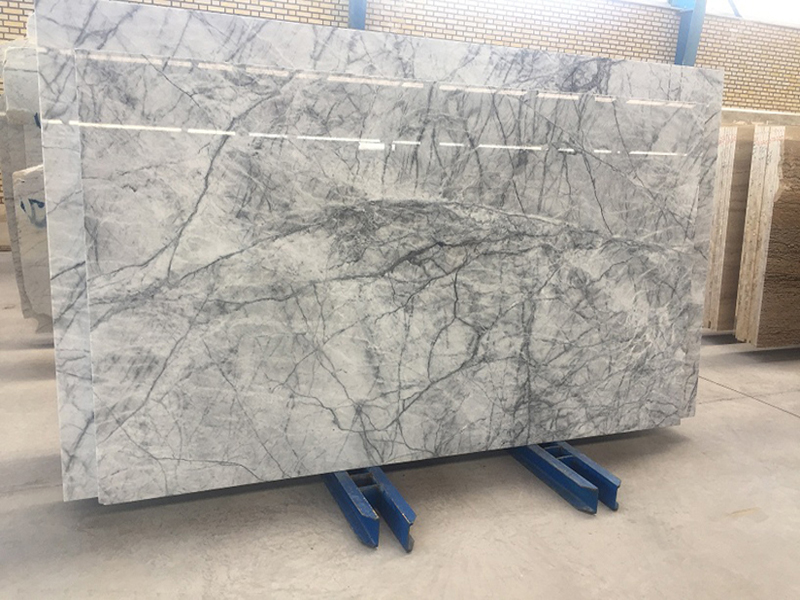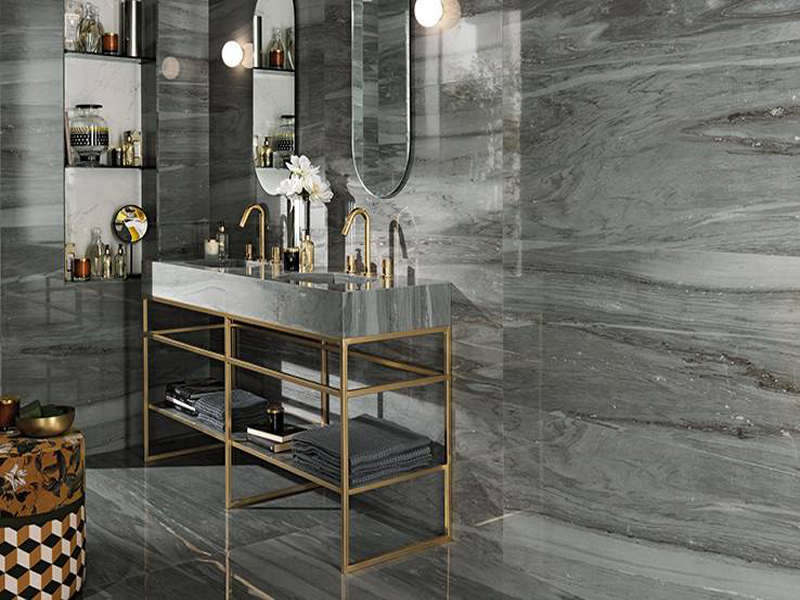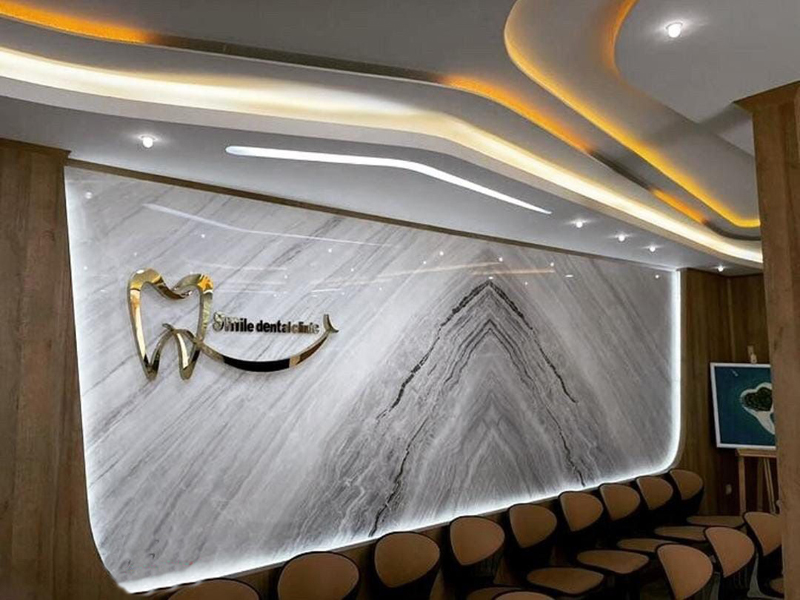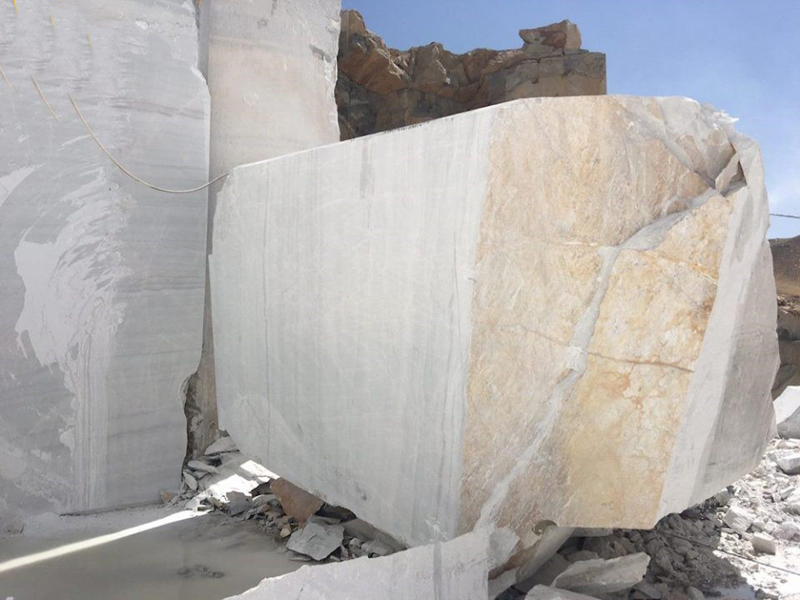
crystal stone
Iran with its diverse and unique geography is the land of Crystal stones. There are several crystal stone mines in Iran that are famous worldwide. Iranian stones have variety of colors, compositions, shapes and structures. The quality and beauty of Iranian stones are so great that they have a very good market at the international level. This article aims to introduce some of the most important Iranian crystal stones and related mines while providing explanations about porcelain stones and their characteristics.
Crystal stone formation
Solid materials with an extremely ordered atomic structure are called Crystal stones. There are several ways that crystals can form, including deposition from a gas, precipitation from a solution, and solidification from a molten state. A crystal’s size, shape, and internal structure are all influenced by the particular conditions under which it forms, including temperature, pressure, and chemical composition. Overall, the structure of crystal stones is defined by the arrangement of their constituent particles, and the way they are made can vary depending on the specific type of crystals and the conditions under which they have formed.

Applications
Numerous industries and practices employ crystal stones in a variety of ways. cCrystal stones are often used for the following purposes:
- Jewelry and Ornaments
- Healing and Metaphysical Practices
- Technology and Electronics
- Decorative and Interior Design
- Industrial Uses
- Spiritual and Cultural Practices
- And construction
Crystal stones in construction
While crystal stones are not typically utilized for structural or functional purposes in construction, their unique aesthetic and perceived metaphysical properties make them sought-after materials for certain decorative and design applications within the built environment. But, when it comes to the construction sector, crystal stones can be utilized in various ways. Here are some potential applications of crystal stones in construction:
- Decorative Stone: Crystal stones, such as marble, onyx, and quartz, are often used as decorative elements in construction. They can be employed in countertops, flooring, wall cladding, and other interior and exterior design features to add a touch of luxury and elegance to buildings.
- Building Facades: Certain types of crystal stones, particularly those with unique patterns and colors, can be used as cladding materials for building facades. This can enhance the aesthetic appeal of the structure and create a visually striking exterior.
- Interior Design: Crystal stones are used in construction for interior design elements such as ornamental columns, decorative panels, and intricate mosaics. These applications can contribute to the overall ambiance and style of a building’s interior spaces.
- Landscaping: Crystal stones are also used in landscaping and outdoor construction projects. They can be incorporated into features such as decorative pathways, garden borders, water features, and ornamental rock gardens to enhance the outdoor environment of a building or property.
- Structural Elements: In some cases, crystal stones with high durability and strength, such as certain types of granite and quartzite, can be used as structural elements in construction. They may be employed in load-bearing applications, such as columns, beams, or other architectural features.
- Spiritual and Wellness Spaces: Some construction projects, particularly those involving religious or wellness facilities, may incorporate crystal stones for their perceived metaphysical properties. For example, amethyst and quartz crystals are sometimes used in the construction of meditation rooms, spas, or wellness centers.
Although there are just few potential applications of crystal stones in the construction sector but, the use of crystal stones in construction can add aesthetic value, durability, and a unique touch to architectural projects. If you have specific questions about certain types of crystal stones or their applications in construction, feel free to ask for more details.

Iranian CRYSTAL STONS
In different regions of Iran, various crystal stones with very beautiful and high-quality designs, colors and patterns are produced. Some types of these stones are as the followings:
Marble
Iran is home to several marble mines that yield a diverse array of colors and patterns, and the nation is well-known for its premium marble. Iranian marble’s elegance and durability make it a popular choice for flooring, wall cladding, countertops, and decorative elements in construction.
Travertine
Iran also mines this type of limestone, which is deposited by mineral springs. Because of its unique textures and inherent beauty, Iranian travertine is used in construction for exterior cladding, flooring, and decorative applications.
Onyx
Onyx is a banded variety of quartz that is produced in large quantities in Iran. Iranian onyx is a popular material for decorative elements in construction, including wall panels, countertops, and decorative lighting. It is highly sought after for its translucent qualities and vivid colors.
Granite
Mined throughout Iran, granite is a hardy and adaptable stone. Iranian granite’s strength, resistance to weathering, and variety of colors make it a popular choice for exterior cladding, paving, and structural elements in construction.
Limestone
Iran has an abundance of limestone, which is used in construction for exterior facades, wall cladding, and flooring. Limestone from Iran is valuable.
Quartzite
Iran is home to several mines for quartzite, a metamorphic rock formed from sandstone. Iranian quartzite’s hardness and beautiful appearance make it a popular choice for flooring, wall cladding, and other construction applications.
These are the main kinds of crystal stone mines in Iran that supply raw materials for the building industry. Every variety of crystal stone has unique qualities that make it appropriate for a range of construction uses, enhancing both the functional and aesthetic elements of architectural endeavors.
The best crystal mines in Iran
Several parts of Iran are renowned for their crystal stones that are used for construction purposes. These regions are known for their abundant natural resources and the presence of stone mines, quarries, and processing facilities, making them key contributors to Iran’s stone industry and the supply of crystal stones for construction purposes. Here are some of the notable cities and regions known for their production of crystal stones:
Loristan: Azna and Aliguderz
This stone, which is the most well-known and best-selling white crystal stone in Iran, is mined in the province of Loristan and the city of Azna. The background and theme of this kind is white and light in color, with gray and occasionally colored lines indicating the stone’s primary classification. The strongest types will have a background that is entirely white with few lines, while the weakest types will have a background that is gray and white with some colored and gray lines.
Aliguderz stone mine is the other site located near Azna stone mine in Loristan province. Similar to Azna, the stone that was removed from it is white, but it has a gray and black color scheme that makes the gray lines and halos stand out more. Price-wise, this stone is less expensive than Azna in a number of ways, and it is naturally made in bigger batches. Aliguderz stone is cut into practically every kind of stone that can be sold in the market, including slabs, stairs, carpets, and plaques. There are various varieties of it in each of the aforementioned scenarios, and they can all have unique costs and characteristics like light or gray color.
Isfahan: Laybid
Most parts of the province particularly Laybid in Meimeh, is a major center for the production of various types of marble, onyx, and travertine. The city’s stone industry is well-known for providing high-quality materials that are used in construction and architectural applications both within Iran and internationally.
Yazd
Yazd is recognized for its production of decorative and structural stone materials, including travertine, marble, and onyx. The city’s stone mines and processing facilities contribute to the supply of stone products for construction and interior design projects.
Kerman
Kerman is a significant source of various types of natural stone, including marble, travertine, and granite. The city’s stone quarries and processing centers play a key role in providing construction materials for domestic and export markets.
Hormozgan
This province, particularly the Bandar Abbas region, is known for its production of high-quality granite and marble. The stone materials sourced from this region are utilized in construction projects for their durability and aesthetic appeal.
Fars: Neyriz
Fars Province, including the city of Shiraz and especially of Neyriz, is home to quarries and mines that produce a range of natural stones, such as marble, travertine, and limestone. These materials are used in construction for various applications, including building facades, flooring, and decorative elements.
Kurdistan: Qorveh
Qorveh in Kurdistan has a type of stone which has a white background with erratic black and gray lines visible, is among the most exquisite in all of Iran. The Saiman crystal stone mine, which produces over 24,000 tons of stone annually, is situated in Qorveh city, Kurdistan. This stone has a very beautiful light reflection and is very distinguished despite the analysis because of the crystal material that has given it a very good luster.

Characteristics of Iranian crystal stones
In the construction industry, crystal stones are highly prized for their unique properties, making them valuable materials for architectural and building applications. Several qualities make them especially useful:
- Aesthetic Appeal: The natural beauty, distinct patterns, and vibrant colors of crystal stones make them popular for enhancing the visual appeal of architectural elements such as wall cladding, flooring, and decorative features in buildings.
- Durability: Crystal stones are exceptionally resilient and durable, able to withstand the demands of exterior facades, high-traffic areas, and other construction applications. Their longevity is due in part to their resistance to wear and tear.
- Versatility: Crystal stones offer a wide range of applications in construction, providing flexibility in design and architectural expression. They can be used for both interior and exterior applications, including flooring, countertops, wall panels, and decorative elements.
- Resistance to Weathering: Many types of crystal stones can withstand weathering, making them suitable for outdoor use. Their ability to resist weathering ensures that they maintain their aesthetic and structural integrity over time.
- Sustainability: As natural materials, crystal stones support sustainable development objectives when used in construction.
- Thermal Properties: Certain crystal stones have advantageous thermal qualities, like thermal conductivity and heat resistance, which can be useful in building applications, such as flooring materials or spaces where temperature control is crucial.
- Maintenance: Crystal stones are often low-maintenance materials that need little attention to maintain their performance and appearance, which makes them sensible options for building projects.
- Distinctive Features: Every variety of this stone has distinctive features, like the translucent nature of onyx, the pronounced veining of marble, or the speckled patterns of granite, which enable the creation of architectural elements that are truly unique.
Conclusion
Iranian crystal stones have extremely high variety and quality. Due to beauty, quality, luster and resistance of Iranian crystal stones, they have found a wide application in different aspects. These qualities also make crystal stones as appealing building materials that enhance the practical, sustainable, and visual appeal of architectural and construction projects.

